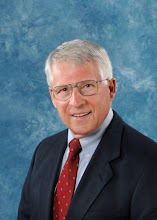The following is offered by Dr. Andy Felts, CARRI Research Associate and Director of the Joseph P. Riley, Jr. Institute for Urban Affairs and Policy Studies, College of Charleston, Charleston, South Carolina.
In the previous blog, John Plodinec gives a good definition of ‘community’ that reflects CARRI’s goal of promoting resilience. A community is a group bound by geography and perceived self-interest that carry out common functions.
While this has worked to keep the CARRI Team focused on a common goal, it is worthwhile to point out that it has raised a number of questions relating back to resilience for us as well.
One important question is whether or not new forms of social (and perhaps even professional) networking have an effect on a community’s resilience. While we have long had two-way forms of networking via telecommunication, it is undeniable that an explosion has occurred in the last few years. Text-messaging, instant messaging and Internet chat rooms now create virtual communities that are not constrained by geography. Voice over Internet, accompanied by cameras, now allows visual and voice communication halfway around the world for less than it used to cost to dial an adjacent area code. As these have consumed our time (and resources), do they have a negative, positive, or no effect at all on the building of social capital that once was done through more geographically specific ways such as interacting with others in our neighborhoods, clubs, churches and the workplace? Social capital is an important concept since it refers to the social cohesion that a community needs to carry out its common functions.
What about telecommuting? There are lots of good things to be said about it, including eliminating long hours for some that would be spent alone in a car. But the workplace also was once where ‘bridging social capital’ was created; that is, interaction between socially different groups. As people telecommute, do they lose a common community vision that may have been supported by workplace, face-to-face interaction? Does this affect resilience?
Finally, another question is raised by the sociologist Ray Oldenburg with his advancing of the function a “third place” plays in community building. By that term, he referred to places other than home or work where people go to relax and feel a part of a community. A third place can be a café, bar, neighborhood basketball court, barber or beauty shop, etc. As these have become more geographically less proximate for many because of community design, is community resilience affected?
It is important to note that these are CARRI questions. As such, they demand more research that specifically links them to community resilience before more definitive answers can be given. It will be research worth undertaking.
Subscribe to:
Post Comments (Atom)

And perhaps a fourth question, related to the first, is this: how does access to social media for information sharing change the relevance, dominion, and impact of traditional media (i.e., the Fourth Estate) and government owned media? Within the emerging social media, there are certainly issues of provenance, governance, and veracity, to be sure, but with the global availability of sites like Flickr, Twitter, Orkut and Facebook, we have seen amazing new trends in information sharing in nations like U.S., Iran, China, and India. In short, how do citizen reporting and the wisdom of crowds relate to a community's resilience and even ultimately to global resilience? Does it improve resilience or favor the status quo? Ultimately, will social media have an impact on economic vitality and growth, energy consumption and conservation, health awareness and improved networks for food and supply distribution? It is tempting posit simplistic conclusions, but I certainly agree with Dr. Felts that there is much to be studied and learned about the phenomenal emergence of social media as it relates to and resilience.
ReplyDelete